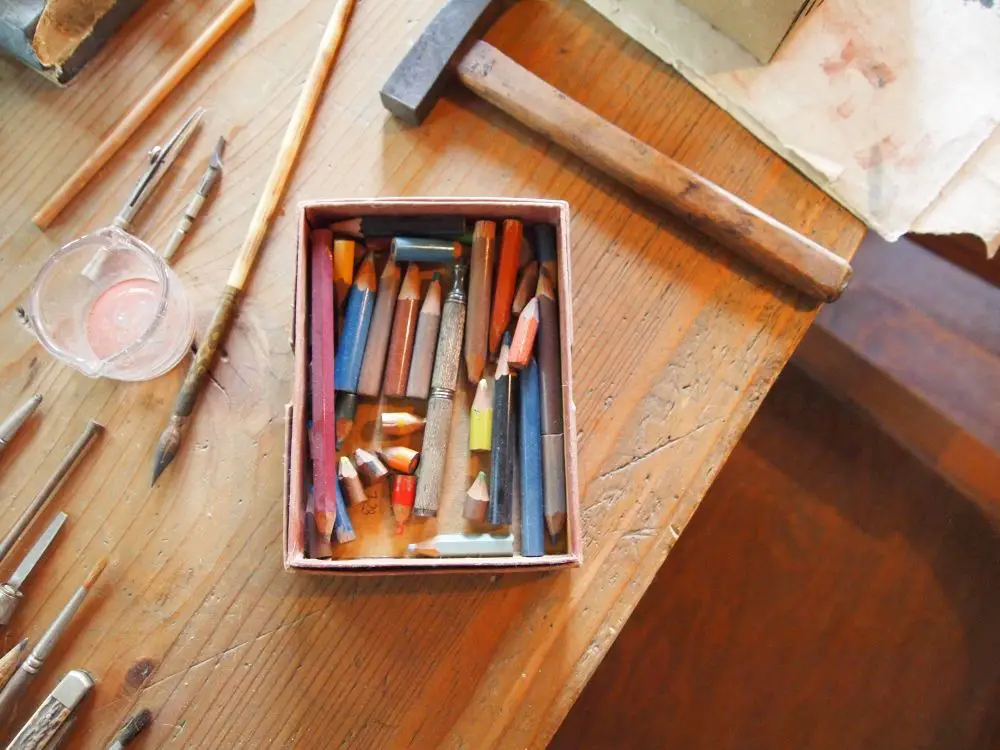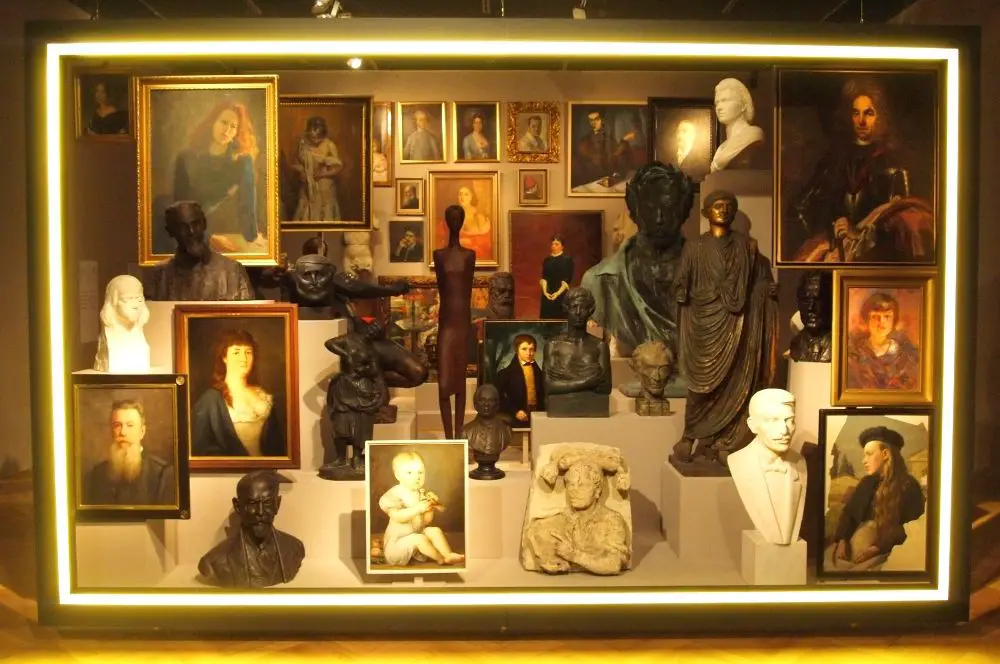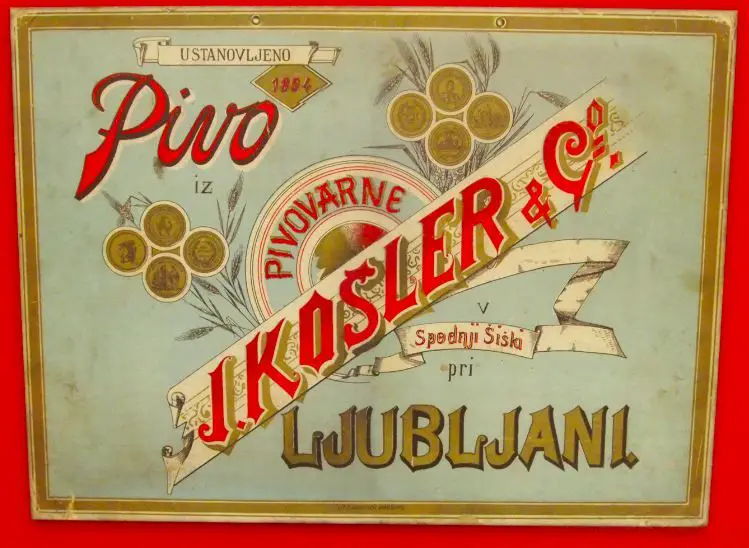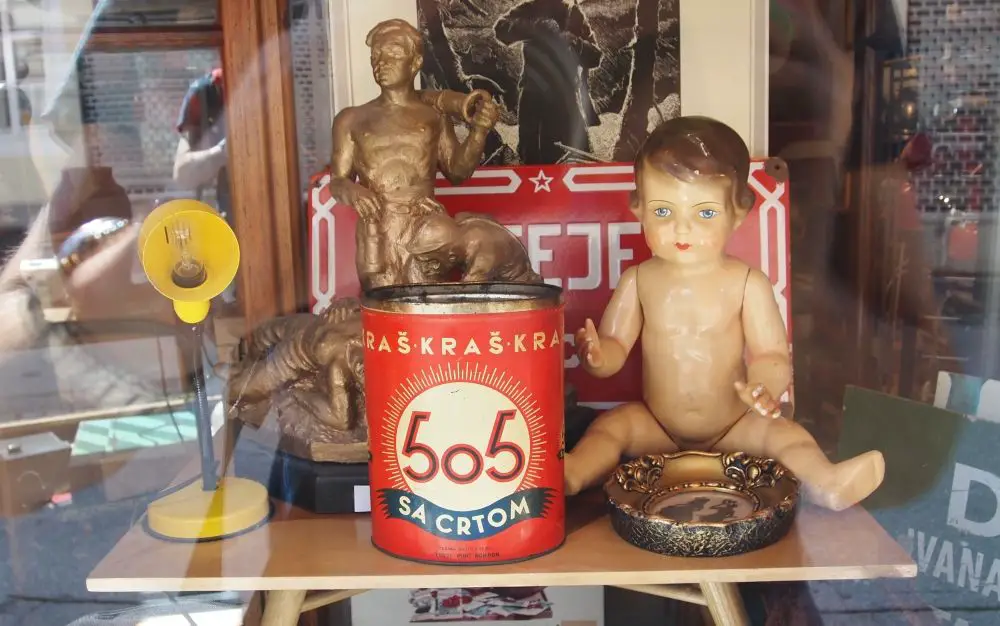News
STA, 11 February 2019 - Štefan Hadalin won the silver medal in the combined at the Alpine World Ski Championships in Sweden's Aare on Monday in what is the first medal for Slovenian male skiers since Mitja Kunc's bronze in the slalom in 2001.
The 23-year-old Slovenian was second only to Alexis Pinturault of France, while third place went to Marco Schwarz of Austria.
Hadalin was far back in 30th place after the downhill but had a superb performance in the slalom part of the event for what is by far his greatest career achievement.
His previous best at world championships was 10th place in the slalom in St. Moritz, Switzerland, in 2017.
This is the second medal for Slovenia at the World Championships in Sweden after Ilka Štuhec won gold in the women's downhill on Sunday.
Below is a review of the headlines in Slovenian dailies for Tuesday, February 12, 2019, as summarised by the STA:
DELO
Education
"Battle for grades heading for secondary school and college": Primary and secondary school students heading on to the next stage of education are fighting for high grades. Parents sometimes help them with excuse notes. Some also believe that there are too many kids with special needs. (front page, page 4)
Venezuela crisis
"Delo amid battle for control of Venezuela": The newspaper has sent two special reporters to Venezuela. They report that the 740 protesters arrested during the January anti-government protests are still kept behind bars. (front page, page 5)
Police offences
"Crime investigator Munda among unscrupulous drivers": Robert Munda, the head of the Maribor criminal police division, is the latest police officer to be caught drink driving by his colleagues. (front page, page 3)
Alpine World Ski Championships
"Lived for the moment and took the medal": After Ilka Štuhec defended her title of the downhill champion, Štefan Hadalin won silver in the men's combined event at the World Championships. (front page, page 13)
DNEVNIK
Alpine World Ski Championships
"Štefan Hadalin like a lightning to success": Thanks to Štefan Hadalin Slovenia won a medal at Alpine World Ski Championships in Aare for the second day running: after Ilka Štuhec's downhill gold, he won silver in the alpine combined. (front page, page 15)
Traffic offences
"Super speed trap at Roška street with the biggest 'catch' last year": The Ljubljana traffic warden service caught 17,900 speeding drivers into two super speed traps last year, most of them in Roška street. (front page, page 9)
Teacher pay
"Overtime during term time, extra work in summer": Primary and secondary school teachers are fed up with highly detailed work time recording rules that kicked in five months ago. The associations of secondary schools and head teachers expect the minister to guarantee teachers the same academic freedom that university professors enjoy. (front page, page 3)
FINANCE
Crackdown on tax evasion
"FURS targeting tax evasion with IT": Equipped with IT solutions, the Financial Administration plans to step up audits, focusing on corporate profit tax, VAT, online sale and transactions with affiliated persons. (front page, pages 2, 3)
Healthcare
"Discount for UKCL: EUR 13 for medicine worth EUR 6,000": While the management of Slovenia's largest hospital is "dreaming about" big discounts that suppliers will willingly offer, the paper has found that in one of the public calls the discount offered was just 0.2% to 0.4% of the highest bid. (front page, pages 6, 7)
GDPR
"What to do when data escape": The General Data Protection Regulation (GDPR) sets out what to do when personal data reach third persons, regardless of how. (front page, page 7)
VEČER
Alpine World Ski Championships
"He grabbed silver": Coming from 30th spot in the downhill, Štefan Hadalin put in an excellent slalom to take silver in the alpine combined in a sensational performance. (front page, page 22)
Healthcare
"Difficulties, not collapse of healthcare": Health Minister Samo Fakin disagrees with claims that the health system is collapsing; he proposes tackling the problems through a fairer remuneration of doctors. (front page, page 3)
Italy-Slovenia ties
"Indignation at historical revisionism": Revisionist comments by European Parliament President Antonio Tajani at a ceremony remembering foiba victims in Basovizza near Trieste have triggered indignant protests in Slovenia and Croatia. (front page, page 5)
European Capital of Culture bid
"European Capital of Culture Ptuj in a joint effort only": The mayors of the Spodnje Podravje region will take a vote on whether Ptuj should bid for the 2025 European Capital of Culture. (front page, page 15)
Alpine skiing
"Champion at home": World downhill champion Ilka Štuhec showed her second gold medal in Zagreb yesterday. Today she will be socialising with her friends in Maribor. (front page, page 23)
STA, 11 February 2019 - More than 21,000 people have signed a petition urging reform of the Slovenian education system to make it more children friendly. However, two former ministers warn that rash and radical changes may backfire.
The petition has been launched by a parents' association called the Parent Council, whose chairman Nataša Šram says that "generations before us have been warning something is amiss with our education system".
The initiative calls for reducing the volume of syllabus and homework, for more descriptive grading, and for transforming the school-leaving exams into entrance examinations for secondary schools and colleges.
The parents propose reducing the syllabus by getting rid of useless content in the curricula, and cutting down on homework by giving the teacher more scope for revision at school.
"The petition was drawn up because we realised that as parents we cannot do much through parent councils [at schools] and because the petition is the only way to impact the education system's regulation," Šram told the STA.
She would not single out any of the 14 changes proposed in the petition, also because many are interlinked so several should be implemented at once.
Parents complain about pupils’ workloads, class sizes and grades
She believes that the changes affecting the scope of the syllabuses and homework and those concerning grading could be carried out quite fast. One of the demands is reducing the size of class to 24 children.
Anton Meden, the chairman of the Parent Council Association, an association bringing together parent councils at Slovenian primary schools, would like a sober debate based on arguments.
"It's hard to say whether the students are over- or under-burdened, but fact is they have many more subjects and more grading than in comparable European countries, in particular in final years of primary school.
Related: Primary, Secondary and Tertiary Education in Slovenia
"As far as homework is concerned, there are no objective data as to whether there's too much, but we have reports from parents that its volume has been increasing in recent years," Meden told the STA.
He has compared primary school syllabuses with those for the same subject at secondary school and at the university, "finding that they are taught a lot of complexity in primary school".
He said that parents were also reporting that increasingly complex content was being moved down to ever younger children and students.
However, Meden also says that before any changes are made analysis should be conducted and then changes made only based on the findings.
More data needed before action is taken
"Our association wrote down our observations (some of them similar to those in the petition) last spring before the general election, but we didn't offer ready-made solutions because we believe we need hard data first and then a thorough rethink before we take measures."
Similarly, two former education ministers, Slavko Gaber and Maja Makovec Brenčič, warn against too fast or too radical change.
"The worst thing that can happen to the schools system is an ad hoc approach," Gaber told the STA on the sidelines of a debate on private schools hosted by President Borut Pahor last week.
Gaber, who served several terms as education minister in 1992-1999 and 2002-2004, does not support proposals such as reintroducing entrance examinations or scrapping national school leaving exams.
He also has misgivings about any "disburdening" of primary or secondary school students. "Our school is comparable to schools elsewhere around the globe, even to the best ones," he said.
He believes that investing time and money pays off, adding that Slovenia "can also have a system that won't demand almost anything, if that's what we want, but the outcome will be such as well".
The debate will continue…
Makovec Brenčič, the education minister between 2015 and 2018, says that any change should be taken step by step and based on a consideration as to what it is that you want to give to the students.
She is a supporter of the national school exams, and introducing such exams, currently held in the 6th and 9th year of primary school, for year 3 children to check on how their learning is upgraded throughout school.
In response Šram says that it is not radical changes that their petition calls for and that the parents would be happy if at least something changed, such as halving the number of grades.
The petitioners have been invited to discuss the issues and proposals they have highlighted with Education Minister Jernej Pikalo at a meeting on Tuesday.
STA, 10 February 2019 - Slovenia was hit by a major ice storm in late January 2014. Lasting ten days and coating vast swathes of the country in thick glaze ice, the extreme weather event left deep scars on Slovenian forests that remain painfully visible.
Six million cubic metres of wood had to be felled as a direct consequence of the glaze ice, more than the typical annual nation-wide wood harvest, with an almost three million cubic metres more left to rot in forests.
The direct economic damage to forests has been estimated at EUR 214m, with total damages significantly higher, at EUR 429m, due to the destruction of rail, power and telecommunications infrastructure.
Infrastructure has been repaired, but forests remain scarred, having been additionally hit by a massive bark beetle outbreak in 2014-2018 that condemned over seven million cubic metres of spruce to felling, and a severe windthrow in late 2017.
The glaze ice destroyed mostly broadleaves and the bark beetle attack decimated spruce. Combined, these events have permanently altered the species composition of Slovenian forests.
Experts believe spruce, because of its economic importance the dominant tree species in the country, will be gradually supplanted by more robust species such as Douglas fir.
But this will merely accelerate the trend already precipitated by climate change, which is likely to drive spruce out of Slovenian forests in the long term, according to the Slovenia Forest Service.
Forest regeneration will not be left entirely to chance, though. While 27,000 hectares of forest has been severely affected by extreme weather, 1,200 hectares will be replanted artificially.
Foresters are planting around 20 species of trees depending on growing site, from spruce and beech to oak, maple, wild cherry, larch and fir.
The massive ice storm of 2014 is considered a once in a century event. "The likelihood of glaze ice across such a vast area is very small. It takes a combination of several conditions that is luckily very rare," meteorologist Brane Gregorčič says.
STA, 10 February 2019 - Talat Xhaferi , the speaker of the Macedonian parliament, will start a two-day visit to Slovenia on Monday that will culminate in him addressing the Slovenian National Assembly when MPs ratify the protocol on North Macedonia's accession to NATO.
The vote on Tuesday will make Slovenia the second country after Greece to endorse Macedonia's accession to NATO under its new name, North Macedonia, following the resolution of the long name dispute with Greece that has obstructed its EU and NATO aspirations.
On Monday, when the accession protocol will be debated by the Foreign Policy Committee, Xhaferi will be received by his counterpart Dejan Židan, President Borut Pahor, Prime Minister Marjan Šarec and Foreign Minister Miro Cerar.
He is also scheduled to meet a joint delegation of the parliamentary foreign policy, EU affairs and defence committees, and the group of Slovenian-Macedonian friendship.
On Tuesday, when the accession protocol will be put to the plenary at a session convened specifically for this purpose, Xhaferi will also hold talks with deputy group leaders.
The ratification is not questionable since Slovenia has been among the most vocal advocates of Macedonia's accession to the EU and NATO; this year and next its embassy in Skopje also doubles as the NATO contact embassy for the country.
The government endorsed the NATO accession protocol just a day after NATO ambassadors signed it in Brussels, kick-starting the ratification process in the NATO member states. The formalities are expected to take about a year.
The first country to ratify the protocol was Greece, which had for years hampered any progress towards NATO or EU accession due to a dispute over the country's name that was resolved with the Prespa Agreement in June 2018.
Xhaferi's talks with Slovenian officials will focus on these latest developments, but strengthening of bilateral political and economic cooperation will also be on the agenda.
The current situation in Western Balkans, relations with neighbouring countries, the global security situation, and migrations will be discussed as well, the National Assembly has said.
As former Yugoslav republics that secured independence, Macedonia and Slovenia have long had deep and friendly relations that extend beyond political ties.
And although trade is modest, at roughly EUR 300m, Slovenian companies are among the principal investors in Macedonia.
With NATO accession all but secured, the focus is now likely to shift on Macedonia's EU aspirations, which Slovenia has been a supporter of.
Slovenia has advocated the position that member states should endorse the start of EU membership talks with Macedonia, which has been a candidate country since 2005, a decision it expects to be taken before the summer.
It has long argued that despite its internal problems, the EU may not ignore Macedonia or Western Balkans in general, since many painful issues in the region remain unresolved and may erupt in conflict it left to fester.
Xhaferi visit will cap a lively political exchange in recent years that has included visits to Macedonia by Miro Cerar, first as prime minister in April 2018 and and then as foreign minister in October.
Speaker Dejan Židan was in Skopje in September, just before the referendum on the name deal, and Defence Minister Karl Erjavec paid an official visit in January.
Below is a review of the headlines in Slovenian dailies for Monday, February 11, 2019, as summarised by the STA:
DELO
Alpine World Ski Championships
"Downhill explosion for a second golden snowflake": Ilka Štuhec becomes the fifth woman alpine skier to defend the title of downhill world champion. (front page, page 13)
German economy
"Troubles of German economy": After Germany's exports reached a record level for the fifth year running last year, the pace of growth has slowed down along with economic growth. (front page, page 3)
Party ratings
"Šarec and the LMŠ take the lead": Prime Minister Marjan Šarec's popularity ratings keep growing as does voter approval rating for his LMŠ party. (front page, page 2)
DNEVNIK
Alpine World Ski Championships
"Repeat - Ilka Štuhec's biggest success": "I might cry a little still," Ilka Štuhec said as it became clear that she won her second straight title of world champion in downhill, the queen discipline of alpine skiing. (front page, page 15, commentary 14)
Minimum wage
"Some won't feel wage increase at all": The effect of the higher minimum wage will be much smaller than desired because social benefits will decrease as much as the wage increases and those who receive the minimum wage will no longer be eligible for the highest income tax credit. (front page, page 2)
FINANCE
Economic trends
"Bad omens for Slovenian exports": Slovenia's exports rose by 9.2% and imports were up by 11% to the highest ever levels last year. However, the outlook for exports is deteriorating. (front page, pages 2, 3)
Intereuropa takeover
"Pošta Slovenije submits bid for Intereuropa. Who else?": The national postal company has submitted a binding bid for the acquisition of a 72% stake in the logistics company Intereuropa. Bids have also been submitted by Turkey's Netlog Logistics and British Xpediator. (front page, pages 4, 5)
Receivership
"Janković's father in-law's company in receivership": Due to a high tax debt, the Ljubljana District Court has launched receivership at Kapuciner, the company owned by Mohamed Gawish, the father-in-law of Ljubljana Mayor Zoran Janković. (front page, page 4)
VEČER
Alpine World Ski Championships
"Bravo, champion": Ilka Štuhec was crowned downhill world champion for a second time. "I may have never before stood so upright, so determined at the start," she said. (front page, pages 2, 16, 17)
Magna Steyr investment
"Decisive days for Magna": It is still not clear whether the EUR 160m paint shop built by the automotive group Magna Steyr near Maribor will start production this week as planned. (front page, page 3)
STA, 10 February 2019 - Slovenian ski star Ilka Štuhec won the downhill at the Skiing World Championships on Sunday, defending her title and achieving the highlight of her career.
The 22nd World Championship medal for Slovenia marks a dream comeback for the 28-year-old, who returned to competition this season after sitting out the entire previous season due to a knee injury.
Štuhec finished the shortened course - it was cut by almost a quarter due to bad weather - in 1 minute, 1.74 seconds, 0.23 seconds ahead of Corinne Sutter of Switzerland.
Lindsey Vonn bid farewell to professional skiing with a surprise third place, half a second adrift.
Due to the shortened course, the downhill was widely expected to be just the latest in a series of very tight races this year, making Štuhec's 0.23-second gap all the more impressive.
Štuhec has also become first woman to defend the downhill World Championship title in downhill thirty years.
The Maribor native said she knew she was able to ski fast, she just "needed the confidence to ski and enjoy".
"I felt super determined at the start to just throw myself into it," she said.
"I am yet to realize what I have done again. I just stood on the start, ready to ski and enjoy, and I did it."
Having already won three downhill podiums this season, Štuhec entered the event as one of the favourites despite a dismal 8th place in the super-G and tenth place in the combined.
Vonn had set a great time before her with an excellent second half of the race, but Štuhec excelled throughout the course to carve out the decisive advantage.
Despite initially wanting to appear in the giant slalom, Štuhec will leave Aare to focus on the rest of the season and the remaining three downhill World Cup races.
She is currently third in the overall downhill rankings behind the Austrians Ramona Siebenhofer and Nicole Schmidhofer.
February 10, 2019
Read part one here and part two here.
The main task of the Slovenian Mountaineering Society (Slovensko Planinsko Društvo, SDP), established in 1893, was to build, take care and then walk along the secured mountain trails. One of the first important improvements on Triglav was securing some of the most problematic parts of the route leading to the summit. In the early 1870s, a local guide, Šest, and his son eased the trail from Triglav temple to Little Triglav, cut some very much needed steps into the rock, and secured the ridge between both peaks with iron poles with loops that carried a rope fence, which now allowed even more climbers to reach the summit.
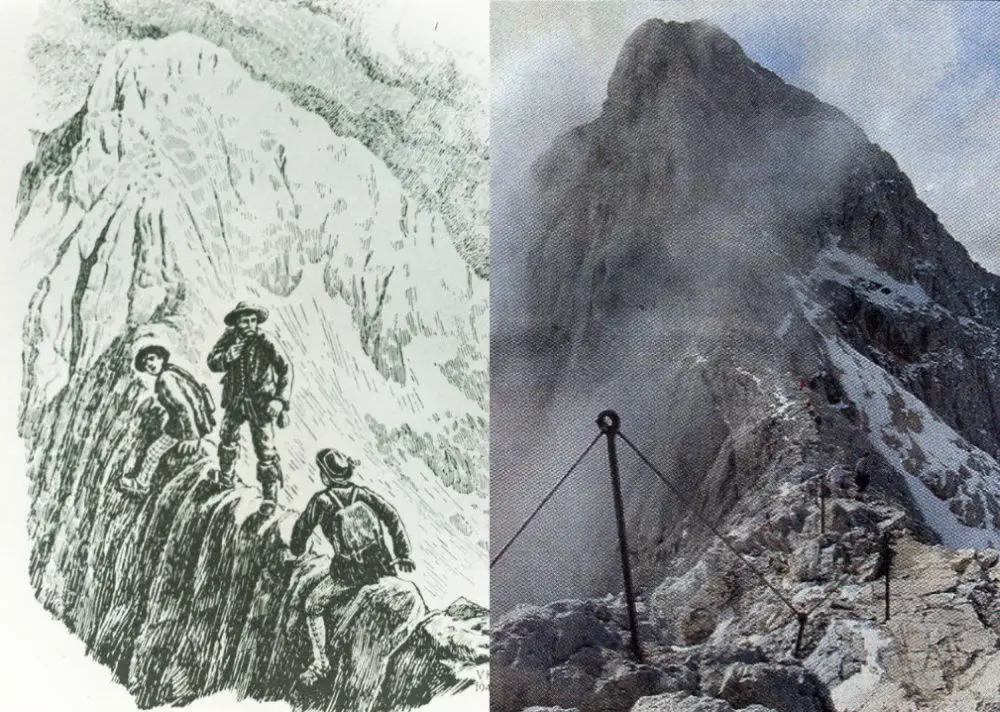
In the years that followed, more trails were built and secured, allowing the ascent to the summit from several huts in various directions, including from the north. This is a route which used to cross the shrinking glacier, but today leads to Kredarica, the most popular starting point to reach the summit since Jakob Aljaž found a great spot for a hut which was built there in 1896.
However, the Slovenian Mountaineering Society did little for a small group of daring young climbers, who were more interested in new routes than tourist walks on known and secured trails. On Triglav, this meant climbing the Northern Wall, one of the largest of its kind in the Eastern Alps. It's 1300m high (following the German route) and 3500m wide, with several shelves and ravines forming independent walls within the big one. Triglav’s Northern Wall is also home to several of the hardest climbing routes in the Slovenian Alps.
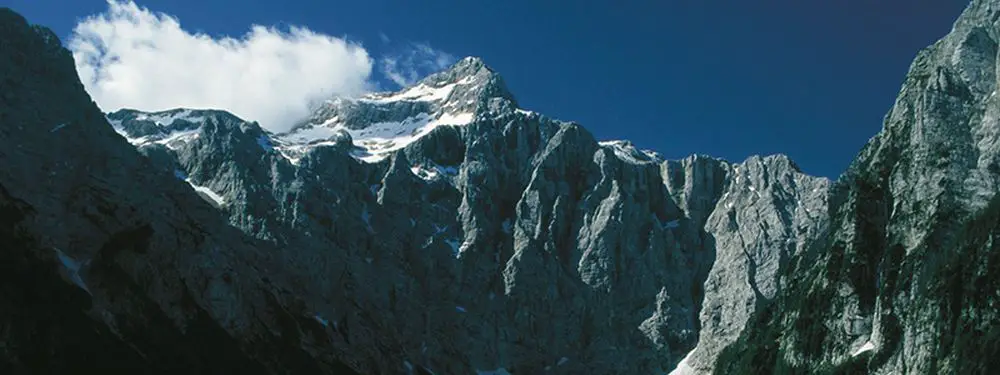
Triglav Northern Wall
Although the first climbers of the Northern Wall were shepherds and hunters, who mostly followed the paths of animals, sports climbing was based on a different kind of logic from that which found a path that was shown to a “gentleman” by a hunter, as the so-called Slovenian route across the Northern Wall was shown by a guide (Komac) to Henrik Tuma in 1910. If the new route for the older generation meant an easier path across a newly climbed slope, the new view on alpinism involved climbing a new, more difficult route without cleared paths and instead with the help of pitons and ropes.
Triglav’s Northern Wall was considered one of the three main problems of the Eastern Alps before it was even climbed, and as such was the focus of German, Austrian and Czech climbers. After the walls of Watzmann (1888) and Hochstadl (1905), the wall of Triglav was finally climbed by three Austrian Germans, Karl Domenigg, Felix Koenig and Hans Reinl, in 1906. The route has become known as the German route, and their success was immediately followed by several failed attempts, some even fatal ones.
Dren Society
In 1908 the Dren society was established, a group of students interested in Alpinism, skiing, caving and photography, novel activities outside the usually promoted Alpine tourism of the Slovenian Mountaineering Society, whose members considered them as “neck-breakers”.
Slovenian Alpinism before World War One was still way behind the developments in other parts of the Alps. The first use of a piton by a Dren member, Pavel Kunaver, is only recorded in 1911, which is also the last year of attempts at the Northern Wall until after the war.
Although Dren members did introduce some novelty into Slovenian climbing, such as winter ascents (sometimes accompanied by skiing) and other more adventurous climbs, their equipment and technique at the time only allowed them to climb routes of the third level of difficulty, and their predecessor and colleague Henrik Tuma hadn’t climbed anything beyond that level either.
This situation can be seen in the fact that the abovementioned German route on the Triglav Northern Wall, which had the climbing difficulty of level IV, was the most difficult route in Slovenian mountains at the time. Hans Reinly, one of the three first climbers described the achievement with the following words: “Triglav rises its triple head angrily. Let it be called Slovenian highest mountain, but this time it was the German force that conquered its most terrifying hip and fought through dark fogs which driven by a storm descent into the depth from the grey ice at the edge of the wall.” Worth mentioning is that in those days there was no meteorological report, and the day and a half climb took place in rain and bad weather.
The guiding ideas of the Dren were to conquer Slovenian mountains before the German mountaineers, try to prevent the Germanisation of Slovenian mountain names, and to climb without mountain guides, which was the main mountaineering style of the time. Lack of manpower and resources prevented these goals being fully achieved, although the ideas persisted throughout the interwar period and became perhaps the main reason behind the increasing Slovenian obsession with Alpinism, which eventually produced some of the best climbers in the world and continues to do so, regardless of the small the size of the place and its population.
Triglav in the Interwar period
After the war, and let’s not forget that one of the bloodiest WWI fronts took place right at Triglav National Park’s eastern border across the banks of the River Soča (the Battle of Isonzo), the main concern of the Slovenian Mountaineering Society was mostly fixing what had been damaged or destroyed.
Furthermore, the Austro-Hungarian Empire fell apart and Slovenia joined the newly formed Kingdom of Serbs, Croats and Slovenes. It turned out, however, that in 1915 the Triple Entente had signed a secret agreement with Italy, promising it large chunks of the Austro-Hungarian Empire in case of victory. With the 1920 Treaty of Rapallo Italy managed to claim most of the lands promised to her by the United Kingdom, Russia and France, which set the Italian-Yugoslav border at the peak of Triglav, a couple of metres away from Aljaž Tower.
Originally, the entire peak of Triglav was to belong to the Kingdom of South Slaves, however, Italy pushed very hard to get the land under its jurisdiction. The dispute was even more meaningful given that it was part of an attempt to extend poor conditions the Slovenes on the other side of the border had to endure in the face of the rising Italian fascism. The negotiations lasted for four years, and while waiting for the final decision certain incidents took place at the top of Triglav, in the summer of 1923 in particular. These are often referred to as “painting battles” but did in fact involve a more serious weapons beside the paintbrushes, which were used to paint Aljaž Tower with slogans and flag colours. Luckily, nobody got hurt, Aljaž Tower was eventually repainted to its original grey, and the final decision on the border in 1924 set the boundary marker 2.55m west from the Aljaž Tower, rendering the summit it effectively Slovenian.
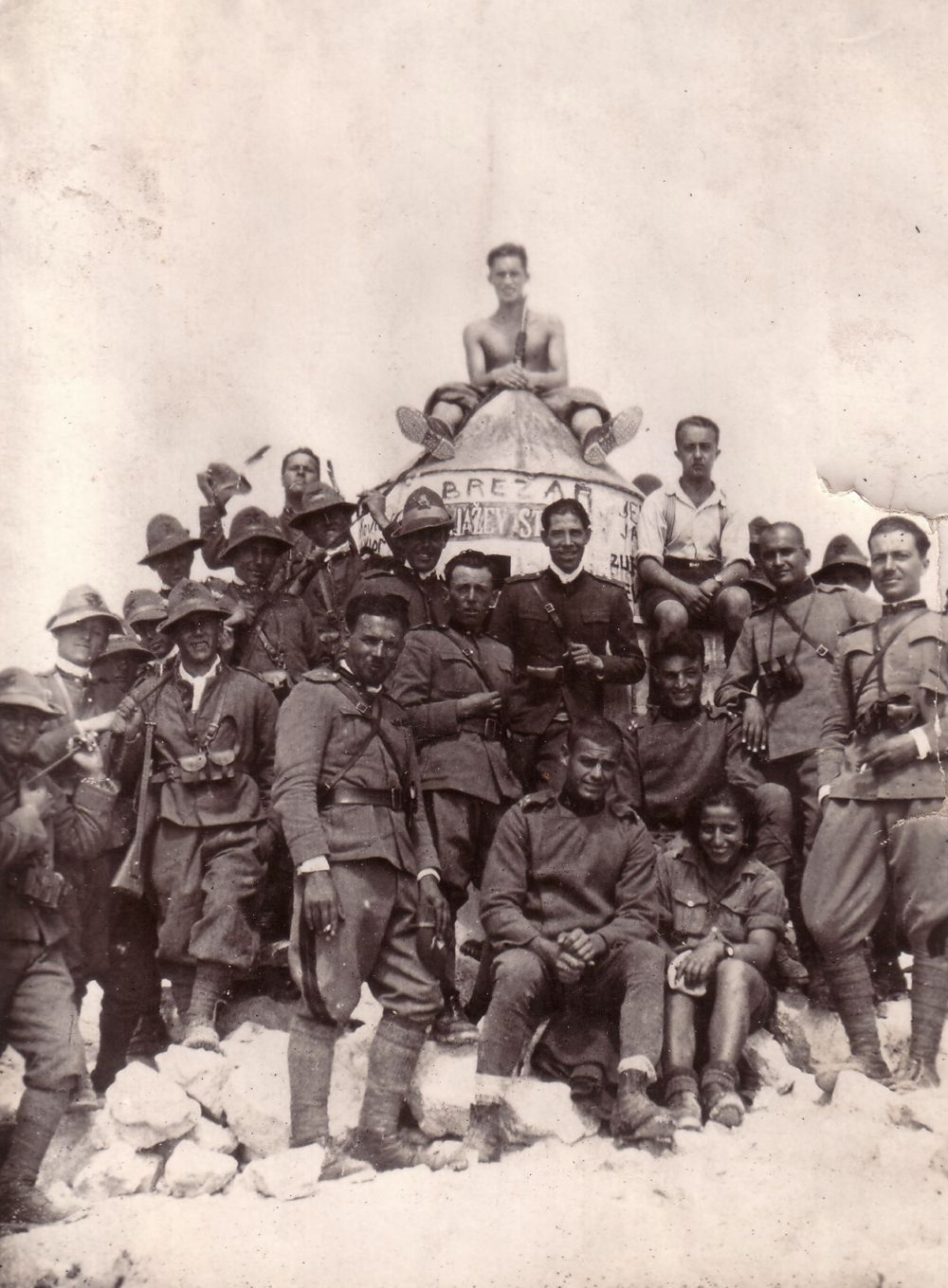
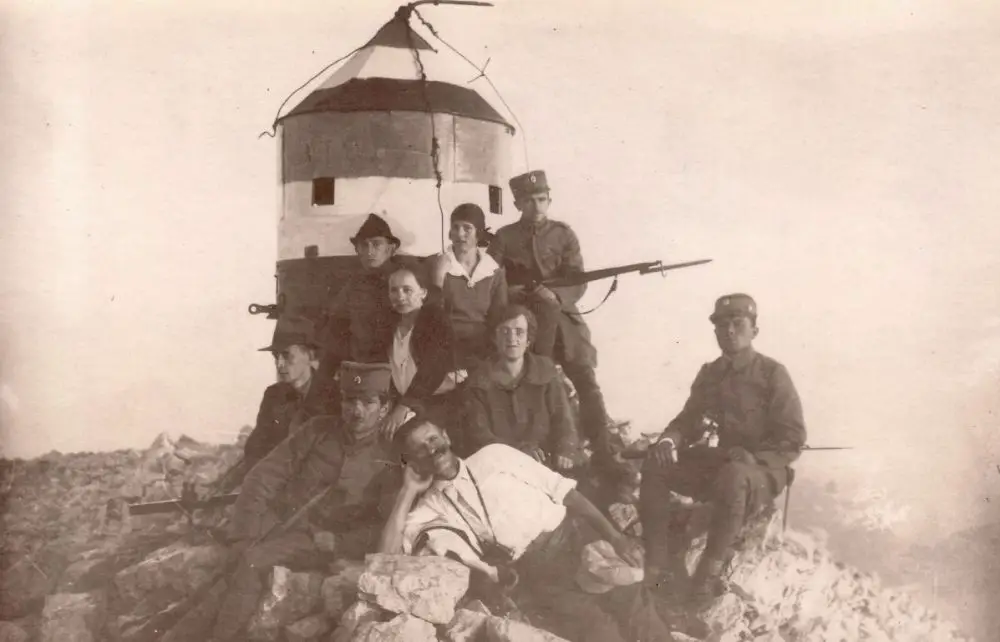
Tourist Club Skala
Within the Slovenian Mountaineering Society (SPD) friction between the moderates and those advocating for “steep tourism” continued into the interwar period. Since the majority of members would not allow sports climbing to be recognised within the SDP, young mountaineers splintered off into a Tourist Club Rock (Turistovski klub Skala, TK Skala) in the winter of 1921.
Rock’s main goal was to continue the development in sports climbing started by Henrik Tuma and evolved by the Dren Society. Among the important climbing achievements of TK Skala are the first Slovenian level V difficulty route climbed by a female climber, Mira Marko Debelak, in 1926 (at the north face of Špik), and the first fully successful winter climb of Triglav’s northern wall in 1939 by Beno Anderwald, Mirko Slapar, Bogdan Jordan and Cene Malovrh, who since 1934, when the SPD finally took alpinism under its wing, had also been members of this organisation.
Foremost, however, Skala’s important achievements also extended into the field of art and culture. Like Dren, TK Skala promoted mountain photography and established a special photography department in charge of postcard production and other images for propaganda purposes. But above all, they were responsible for the first Slovenian feature film, the 1931 V kraljestvu Zlatoroga (In the Kingdom of the Goldhorn) and partially also for the second one a year later, Triglavske Strmine (The Slopes of Triglav). The first movie was produced by Skala and directed by one of their members, Janko Ravnik, while the second was produced by an independent film studio, although it featured several mountaineers/actors from the first film, including Miha Potočnik and Jože Čop.
STA, 9 February 2019 - Germany won the women's team ski jumping team event in Ljubno on Saturday, with the home crowd favourites finishing second ahead of Austria.
The winning team of Carina Vogt, Anna Ruprecht, Juliane Seyfrath and Katharina Althaus just exceeded the 1,000-point mark, with the Slovenians just over 25 points adrift.
"It was great. We're glad we managed to win the second team event," Althaus said after her team won the second team event this season.
For the Slovenians the team silver is the second podium finish in as many days after Urša Bogataj's third place in the individual event yesterday.
The best Slovenian today was Nika Križnar with 91.5 and 93.5 metres, the longest jump of the day.
This raises the prospects of another top result for team Slovenia at the individual event tomorrow, which is expected to attract several thousand fans, just like today's event.
"I'm speechless, I landed two great jumps. I'm really very pleased and can't wait to attack tomorrow," Križnar said.
This week includes Valentine’s Day, Thursday, so be aware that some restaurants might be busier than usual that evening. Otherwise the streets should be relatively empty, so it’s a great time to explore the city without the crowds and be almost certain of a seat or a table wherever you are.
If you're not in town for the week of this guide (11-17 February, 2019) then you can see all the editions here, and you can enhance your stay in the city and impress or annoy friends and companions by learning some obscure facts about the city here, and the Castle here.
As ever, clicking on the venue names in the list below should get you more details with regard to the time, price and location, as well as other events on at this place in whatever week you're here. Finally, if there's something you want to promote in a future edition of What's on in Ljubljana please get in touch with me at flanner(at)total-slovenia-news.com
- Cinemas and films
- Clubbing
- Live music
- Opera, theatre and dance
- Harm reduction and drug testing
- Things to do with children
- LGBT+ Ljubljana
- Ljubljana Castle
- Museums and galleries
- Other things to do in Ljubljana
- Daytrips
- Getting around
Cinemas and films
You can read about all the cinemas in town here, while a selection of what’s playing this week is below, and note that kid’s movies tend to be shown in dubbed versions, so do check before driving out to a multiplex and dropping off the young ones if they can't understand Slovene. Parents should also pay attention to Kinobalon, which is Kinodvor's regular weekend series of film screenings for children, from babies on up, with special parent/child events, "first time in a cinema" screenings, and babysitting. Learn more about it here, and see the current schedule here.
A focal event for moviegoers this week is Kinodvor’s annual Retrosex evening of erotica to mark Valentines Day, and this year the celebration of sleaze takes place on Friday the 15th. It happens here because Kinodvor used to be Kino Sloga, which showed such material in the 1980s. Learn more, and see the trailers, here.
Kinodvor – In addition to Friday’s Retrosex event, see above, the arts cinema not far from the train station is showing, among other features, Green Book, Maria by Callas, Women at War, Beoning (in Korean with Slovene subtitles), Capharnaüm (in Arabic with Slovene subs) and Widows.
Kinoteka – This revival cinema isn’t far from Kinodvor, at the train station end of Miklošičeva, is showing Krótki film o zabijanju, Brutti, sporchi e cattivi, Melancholia, Il fiore delle mille e una note and Take Shelter.
Kolosej - The multiplex out at BTC City Mall is playing all the big movies, which this week include Papillion, Taksi bluz, Serenity, a dubbed version of How to Train Your Dragon: The Hidden World, Green Book, Vice, Mary Queen of Scots, Glass, The Mule, The Favourite, The Upside, Ralph Breaks the Internet: Wreck-It Ralph 2 (dubbed), Asterix: Le secret de la potion magique, Second Act, Južni veter, Aquaman, a dubbed version of Spider Man: Into the Spider-Verse, The Grinch, A Star is Born, Bohemian Rhapsody, and Escape Room. New this week are Lego Film 2, Cold Pursuit, Alita: Battle Angel, and Happy Death Day 2U.
Komuna – The cinema in a basement behind Nama department store is showing Green Book and Bohemian Rhapsody, while from Thursday on you can see Qu'est-ce qu'on a encore fait au bon Dieu?
Clubbing
Compared to some European capitals it can seem that nightlife in Ljubljana ends rather early, especially along the river, but there are still bars that stay open late and clubs were you can dance until dawn, and perhaps the best place to stumble across something interesting is the legendary Metelkova. Be aware it's a grungy kind of place and not for all tastes, but also that there's considerable variety to found within the various clubs there, from death metal to electropop, gay cabaret to art noise. You can read "the rules" of the place here.
Božidar - Friday night it’s Stiropor pres.: ADAM X (Sonic Groove, LIES / USA) playing techno and industrial, with support from Schrauff Elements.
Channel Zero – Friday there’s SUBØ: Bojler x SNIF w/ Merca Bae, with sounds from MERCA BAE (ES), Dvmir b2b KMN, Futon b2b Lil Ris, Novack and TMA, with visual support from SMECH. It seems to be a bass-heavy dancehall club event, with a set from Merca Bae below.
Klub Cirkus – Friday the more commercial end of clubland offers an all-nighter with TRIP ft. Joe2Shine (DJ Mag Top 100 club Revelin / Ultra Europe). Saturday it’s the turn of Best of RNB.
Klub K4 – Friday the klub for kool kids has K4X4 w/ Roza Terenzi playing “dance” provided by DJs Roza Terenzi (Planet Euphorique, AU), Nitz Live! (Synaptic), Softskinson (Sezam), Stasša, Vuka and Disco Durum. Saturday the all-night fun will be provided by Temnica, with Octex (live/dj), Organon (Elements) and Rokko (JustJam).
Orto Bar – Friday night this rock club will swap guitars for turntables, with Orto 90s Hit Mix Vol.1. No further details are given, or perhaps needed.
Live music
Cankerjev dom – Tuesday, the 12th, the country’s main arts venue will host Baptiste-Florian Marle-Ouvrard, who’ll be playing the organ in a show called The Infinite Expanses of Improvisation. “A daring musician, he combines organ with other forms of artistic expression, including dance, electronic music and graphic art.” The programme will include Bach and Stravinsky. The same evening you can enjoy another in the series of concerts curated by John Zorn, with Ikue Mori presenting an audio-visual solo show.
Gala Hala – Live rap is then followed by DJ sets, with Rapetek Extra: Homeboy Sandman & Edan (ZDA), followed by DJs K’Pow and Borka.
Jazz Club Gajo – Jazz Paradise (Slovenska cesta 58) has a Valentine’s concert with Nina Strnad and the jazz trio Lenart Krečič and Gregor Ftičar.
Festival Hall (Vilharjeva cesta 11) – The Embassy of the Islamic Republic of Iran is presenting a free concert by The Darvag Band.
Kino Šiška – Thursday evening there’s live music from American-British quartet Algiers, a band which “has been confronting the forces of political apathy, fascism and social injustice head on with its unpredictable blend of post-punk anger, noise savagery and gospel soul.”
Križanke – The venue that hosts the Ljubljana Festival has a free concert on Thursday, the 14th, with Kjoka Macujama (violin), Milana Černjavska (piano) and Maja Vrbnjak (guitar), playing Schubert and others.
Ljubljana Castle – Friday is jazz night at the Castle, with that often stretching to rock and funk, and this week it’s Nermin Puškar.
Orto Bar – Wednesday evening presents the opportunity to enjoy some mid-week metal at this guitar-friendly venue, with the stage being owned by an all Australian bill of Aversions Crown, Psycroptic, Hadal Maw, and Hollow World. Thursday, Valentine’s Day, it’s the turn of one of Slovenia’s hottest young bands, Koala Voice, who will be presenting their third album, Woo Horsie. Saturday a slightly older crew takes over, with Leteči Potepuhi. The show’s being promoted with their 2009 video for Jedrt, as seen further down.
Opera, theatre and dance
Gledališče IGLU - IGLU Theatre – Saturday night this group is usually putting on an English improv show somewhere in town, but it’s generally promoted after this is written, so check the Facebook before putting on your shoes.
Mini Teater Ljubljana – The English schedule of varied performances for the month is here.
SNG Opera and Ballet – Smetena’s The Bartered Bride will be performed at 19:30 on the 12th, 14th and 16th (Tuesday, Thursday and Saturday). The programme also has Bizet’s Carmen on Saturday, 19:30. A clip from an earlier production is below.
Harm reduction and drug testing
Drogart is an organization that aims to minimise harm on the party scene, and offers drug-testing services and reports on their webpage. It’s in Slovene, but you can Google translate it or work things out yourself, and our story on the group is here. They recently published a story warning about three pills with very high contents of MDMA, with details (in Slovene) here. Also be aware that all the usual drugs are illegal in Slovenia.
Things to do with children
You can find our Top 12 list of things to do with kids in Ljubljana here. If want to read more about the philosophy behind the wonderful House of Experiments look here, while our trip to the Museum of Illusions is documented here, and there’s always riverside walks, pizza and ice cream. With regard to the latter, take a look at our guide to six places that serve good ice cream in winter.
Mini Teater Ljubljana – The season sees a lot of puppet performances for children, in Slovene, at this theatre not far from Križanke. The English schedule for the month is here.
Ljubljana Puppet Theatre - The puppet theatre near the Central Market and next to the Castle funicular has a full programme or shows, for children and adults, with the schedule here.
LGBT+ Ljubljana
If you want to learn more about Ljubljana Pride, then take a look at our interview with its president here. If you're looking for more general links on "gay Slovenia", including a history of the scene and various projects, then you can find that here, while our stories about the community can be found here.
Klub Monokel – This lesbian bar in Metelkova is open every Friday
Klub Tiffany – And the gay bar next door is also open on Fridays, while every Monday until June 2019 there's tango at 18:00.
Pritličje – This seems to be the only "always open" LGBT-friendly cafe / bar / events space in town, and perhaps the country, so it's a good thing it's such a good one, open from morning to night, and with fliers and posters letting you know what's happening outside the narrow confines of, say, a general interest online what's on... guide.
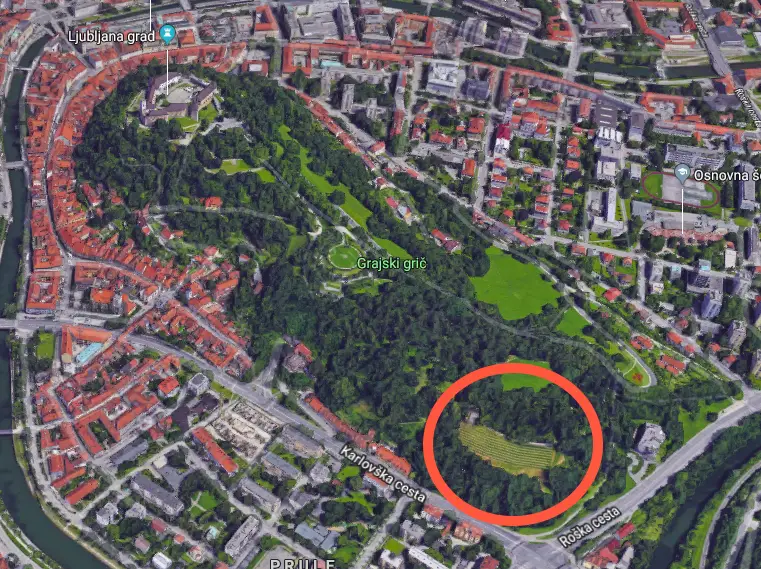
Screenshot from Google Maps, showing the location of the Castle vineyard
Ljubljana Castle
The city’s main attraction is said to be the top tourist draw in the country overall, and to my mind it earns a spot near the top just for the history and views. But beyond that the current owners, the City of Ljubljana, have laid out a varied, interesting and enjoyable programme of events, one that rewards regular revisits.
I try and get up there every Saturday morning to clear my head and move my feet on the trails, and never tire of that end of the hill. At the other end, where the Castle sits, there’s a lot more than fresh air on offer. There are guided tours, restaurants, a café, Castle museum, puppet museum, a Watchtower you can climb to the highest point in the city, art shows, dances, live music, movies under the stars, festival days and more – enough to reward multiple trips up the hill through the year. All of these activities and events can be found on the Castle website, while on TSN you can see “25 things to know about Ljubljana Castle” here, and “Ten Ways to Enjoy Ljubljana Castle” here.
Museums & Galleries
Most public galleries and museums are closed on Mondays, although not the National Museum, and - as noted at the start
Plečnik's desk. Photo: JL Flanner
Plečnik’s House is worth a visit if you want to learn more about the architect who gave Ljubljana much of its character. Read about our guided tour here.
Cankerjev dom – On until February 28 is the exhibition Ivan Cankar and Europe, Between Shakespeare and Kafka, while until March 10 there’s a photographic show on the Ljubljanica, with images of the city’s river captured by Bojan Velikonja. Showing until the end of March is a selection of specimens from The Newspaper Museum.
City Museum – The Museum in French Revolution Square also has an exhibition on the writer Ivan Cankar that’s on until the end of February 2019, with pictures, books and manuscripts, all presented in Slovene and English. It also has a very interesting permanent exhibition on the history of Ljubljana, from prehistoric times to the present day, with many artefacts, models and so on that bring the story alive.You can read about my visit here. Until March 2019 there's a show highlighting the work Elza Kastl Obereigner (1884-1973), a pioneer Slovenian sculptress, with an example of her work shown below.
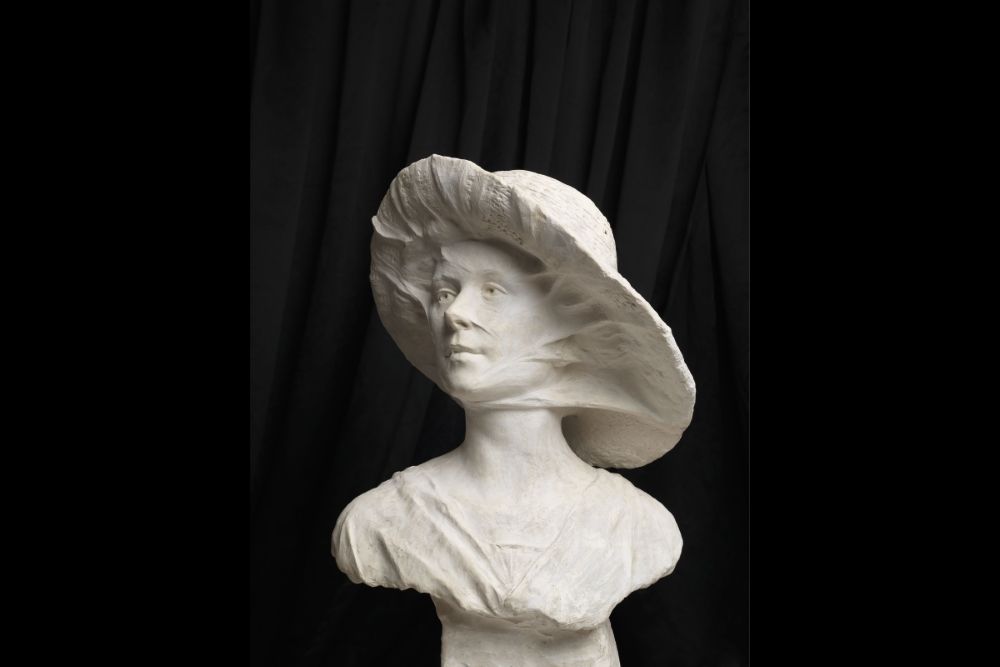
Photo: M Paternoster
The Faces of Ljubljana in the City Museum. Photo: JL Flanner
Galerija Jakopič – On until March 3 is Over My Eyes (Na moje oči), an exhibition of photographs from Iraq taken by Iraqi photographers.
International Centre of Graphic Arts – Running from Friday until March 3 2019 there will be a show of posters from Milton Glaser, while paintings, drawings, prints and from Nathalie Du Pasquier in a show called Fair Game. The latter is being promoted with the following image.
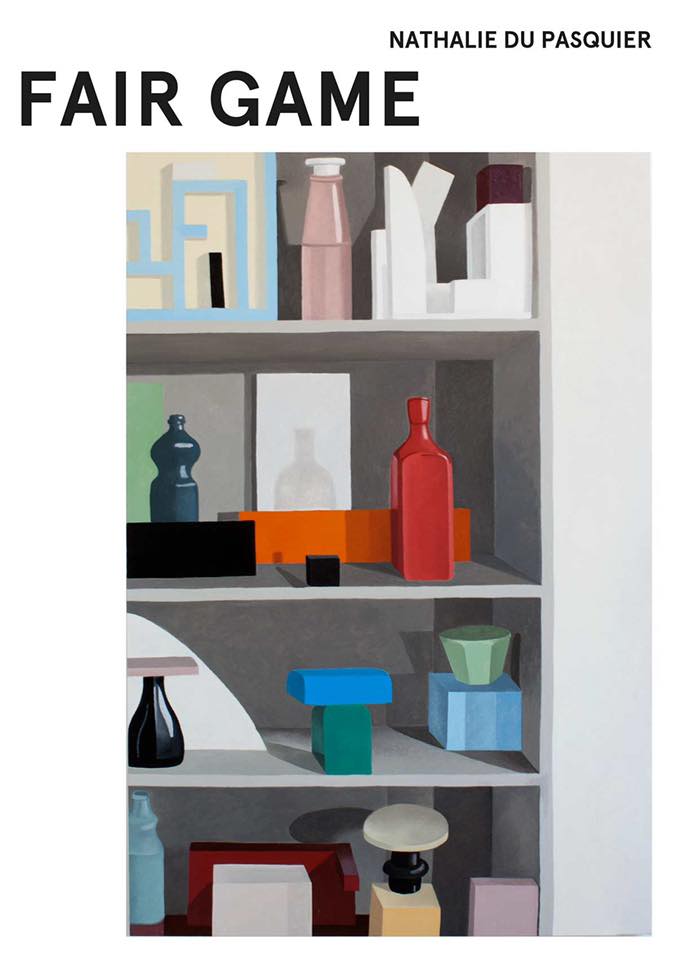
MAO – The Museum of Architecture and Design has much of what you'd expect, and until March 25, 2019, has a show on Ljubljana and it's relation with water. Until February 24 visitors can enjoy Toasted Furniture, which presents some experiments with the reuse of plastic waste, and until February 28 there's a show on Oskar Kogoj and his chairs.
Moderna galerija – The main branch of this gallery, to be found near the entrance to Tivoli Park, has a good collection of modern art, as well a nice café in the basement. Running until March 31 is a major show on young Slovenian painters, Time Without Innocence – Recent Painting in Slovenia, where you’ll see works like the following. You can read about my visit here (I loved it).

Iva Tratnik, Mating Season Totalitarianism, 2014, oil on canvas, 210 x 194 cm

Arjan Pregl, from the Carnival series, oil on canvas (6 paintings 120 x 100 cm; 3 paintings 80 x 60 cm), 2018
National Gallery – The country’s main gallery has “the best” of what’s on offer from the Middle Ages to non-contemporary modern visual arts, and is in a great location for exploring other areas, just by Tivoli Park and opposite the main branch of the Moderna galerija. You can read about our visit to the room containing sacred art from the Middle Ages here.
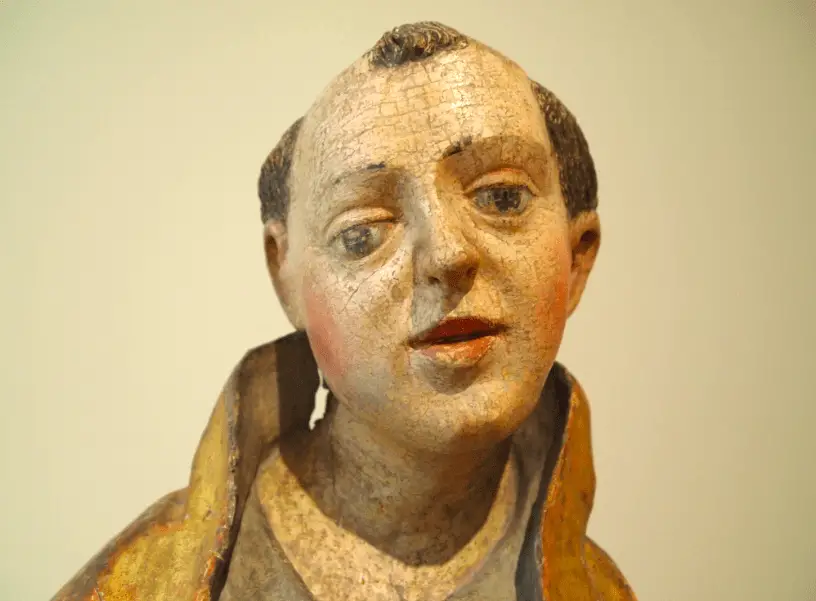
JL Flanner
The real Robba Fountain can be found in the entrance to the National Gallery - the one you see in the Old Town is a genuine fake, as seen below and reported here.
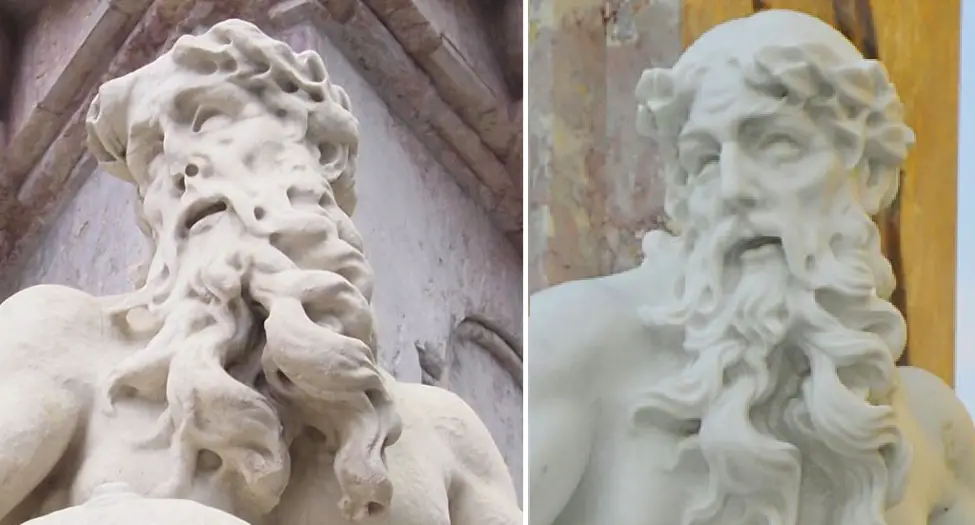
Photo: JL Flanner
National Museum of Slovenia – There’s plenty to see in the permanent collection here, from Roman times, Egypt and more, with the big draw this season being the exhibition of over 140 items of gold from Ming Dynasty China, as reported here, and with an example below. This runs until February 15th.
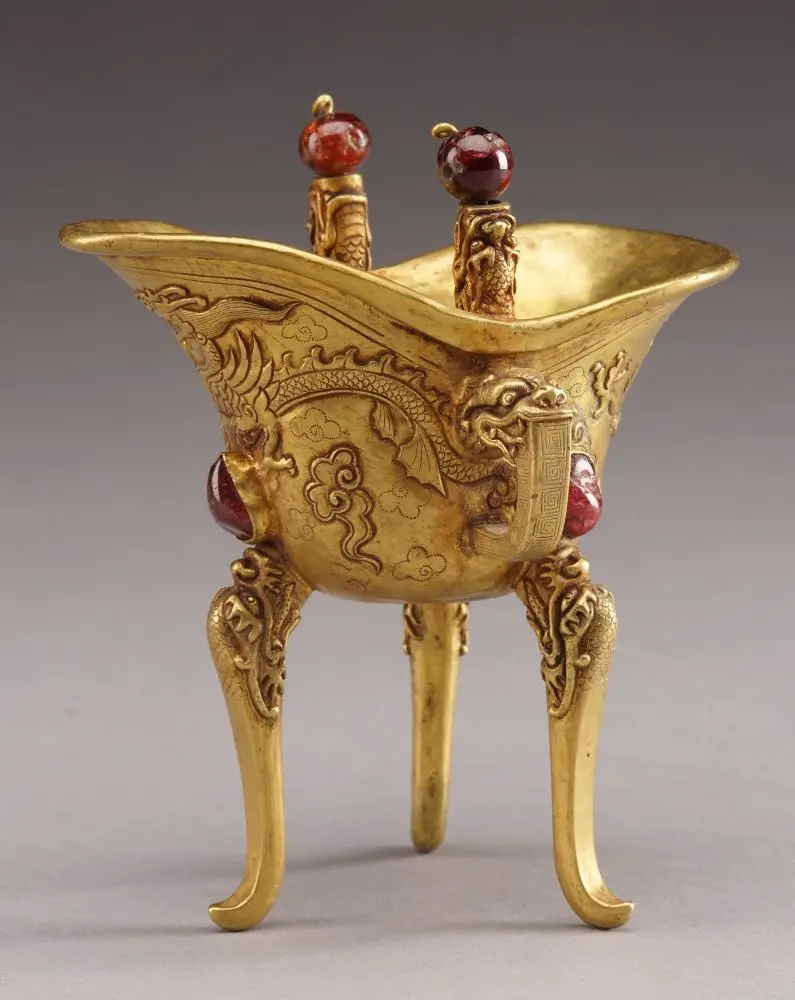
Photo: Wang Wei Chang
Meanwhile, the museum's Metelkova branch, located between one branch of the Moderna galerija and the Ethnographic Museum has some rooms on Church art, furniture and weapons, with the latter including more guns than you'll see anywhere else in town, and quite a thrill if coming from a nation where such objects are not household items.
Natural History Museum – On until the end of June 2019 is Our Little Big Sea, which takes a look at the oceans.
Slovene Ethnographic Museum – The museum currently has a temporary show on Bees and Beekeeping, on until June 16 2019, as well two permanent exhibitions. One of these is called Between Nature and Culture, and has a great collection of objects from Slovenia and around the world, well worth the trip up to the third floor to see it (as recounted here). This place is located near the newer branch of the Moderna galerija and Metelkova.
Union is "the Ljubljana beer", but now both it and Laško are owned by Heineken. There are many local brews on offer around town, though, if you want to explore IPAs, stouts, wheatbeers, sours and so on Photo: JL Flanner
Union Experience – The Ljubljana-based brewer has a museum showing the history of the company, with the ticket also including access to part of the factory and a few samples of the product. You can read about our visit here.
It's not a formal museum, but if you're interested in "Yugo-stalgia" then you'll enjoy a trip to Verba, a small, privately run space that's crammed with objects and pop culture items from the era, and is conveniently located at the start of one of the short walks to the castle. It's also a great place to take pictures, if you leave a donation, and you can read more about it here.
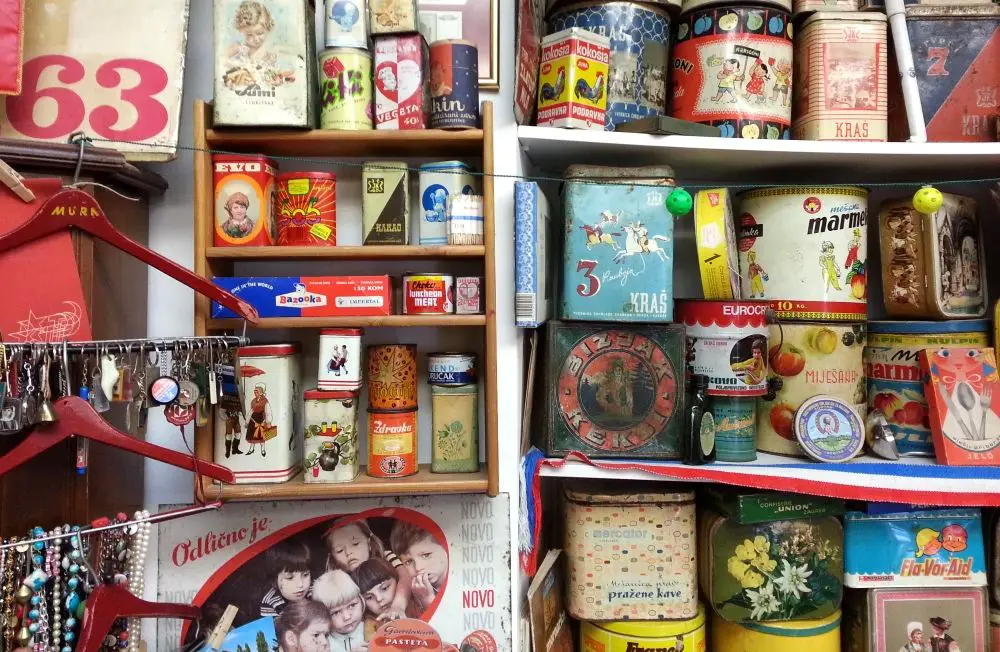
Verba. Photo: JL Flanner
Alternative Ljubljana isn't a museum or gallery, as such, but instead turns the city streets into a museum and gallery. Learn more about their tours of street art, history and LGBT Ljubljana here.
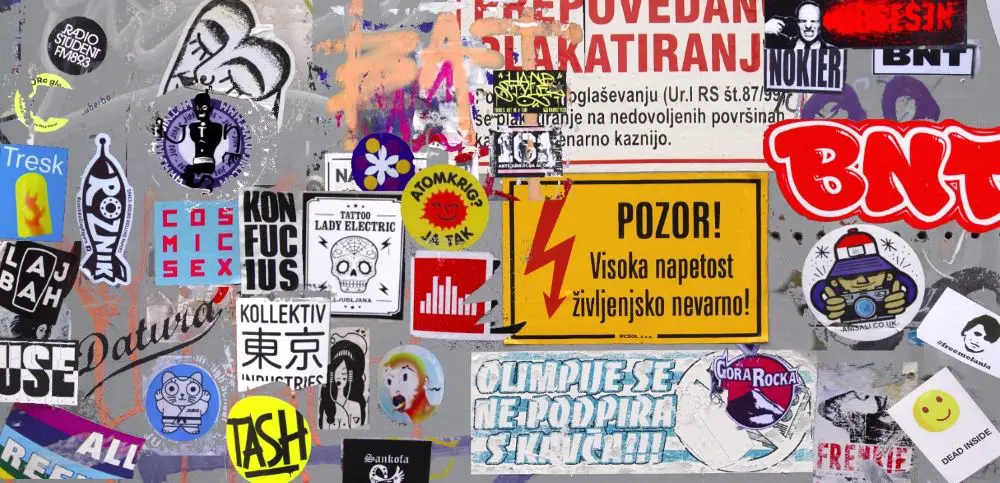
Photo: JL Flanner
Other things to do in Ljubljana
If you'd like to spend an evening painting with others, then take a look at Design with Wine, which organises painting parties on Trubarjeva cesta,
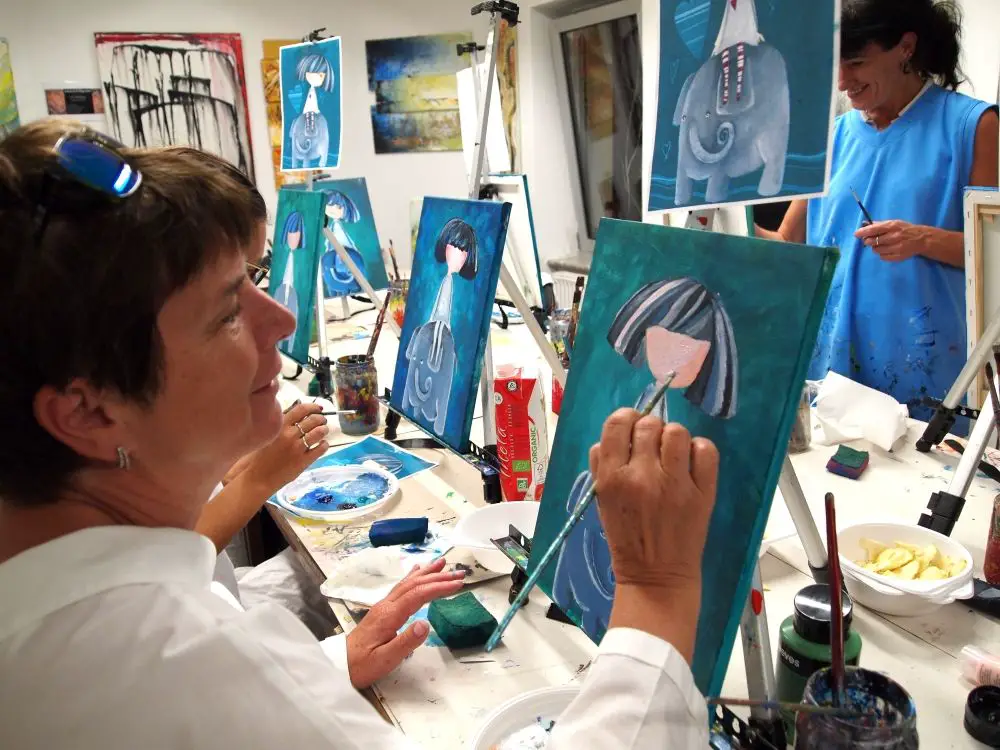
If you want to see some antiques, then check out the wonderful Antika Carniola, as discussed here. The man behind it, Jaka Prijatelj, has a fine eye for life on this street, as you can see on his Facebook account.
Photo: JL Flanner
If you’re in town and want to go jogging or walking in nature, why not take another look at the Castle, with a brief guide to the trails here. If you want something bigger, head to Tivoli Park.
And if you're bored with the Old Town, why not take a walk, cycle or boat ride to nearby Špica and enjoy the riverside life. Learn more about that here.
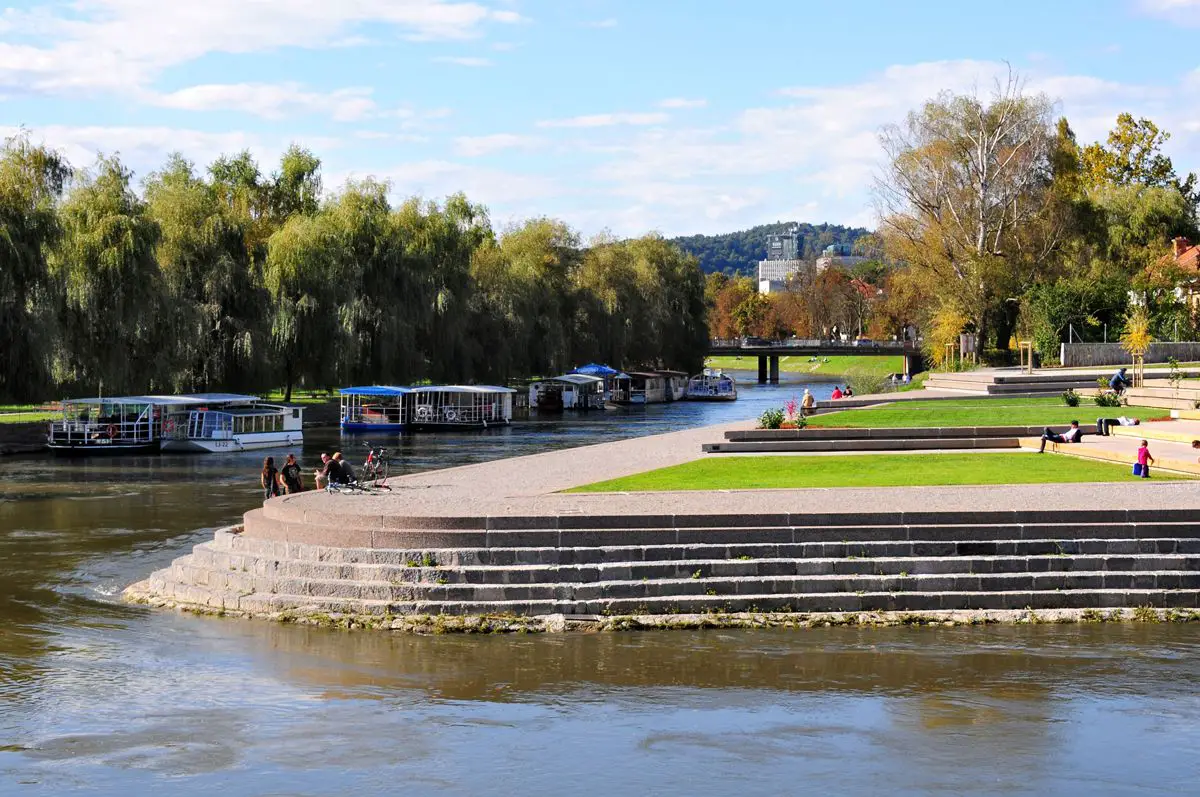
visitljubjana.si
![]()
maxpixel.net, public domain
Want to stretch and breath? Then check out our list of drop-in yoga classes for tourists, visitors and the uncommitted. If you're heading to the coast, check out our interview with a yoga teacher who offers breakfast sessions there, while if you're staying in town (or nearby) and want to try some "family yoga" then you can learn more about that here and maybe get your kids to calm down a moment or two.
There are some golf courses near Ljubljana, but even ones further away are not far, as seen in our list of all the golf courses in Slovenia. Note that these close when the snow starts, if it ever does this year, in which case you might be interested in what's new at Slovenia's ski resorts for 2019, as reported here.
![]()
Photo: maxpixel.net, public domain
Daytrips
Most of Slovenia is only a few hours from Ljubljana, and you can easily visit Lake Bled, Lipica Stud Farm, Postojna Cave, Predjama Castle, the coast and other locations, while if you'd like to take a photo of from that bench in Bled, then you can learn how to get there here. If you’re looking for something more ambitious, then check out our recent guide to the 17 members of the Association of Historical Towns of Slovenia
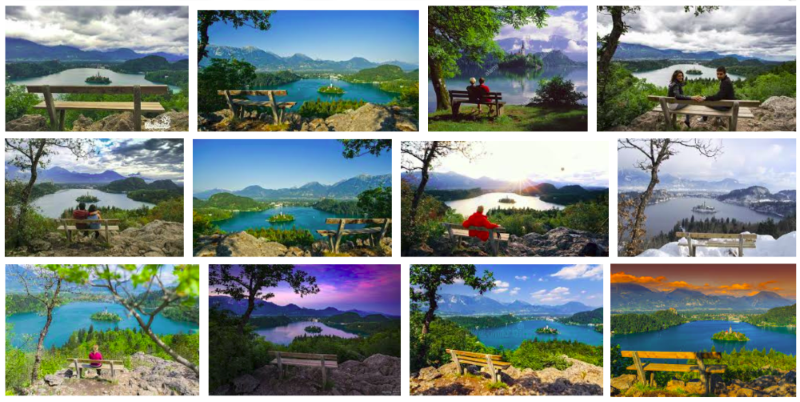
Photo: Google Image Search
Getting around
If you want to get a Ljubljana Tourist Card, which gives you travel on the city buses and entry to a lot of attractions, then you can read more about that here, and if you want to use the bike share system, as useful for visitors as it is for residents, then you can learn more by clicking this. Visitors with reduced mobility will be pleased to find that downtown Ljubljana is generally rated as good with regard to accessibility, and that there’s a free, city-sponsored app called Ljubljana by Wheelchair highlighting cafés, attractions and so on with ramps, disabled bathrooms and Eurokey facilities, which you can read about and download here. Manual wheelchair users can also borrow, for free, an attachment that will motorise their equipment, as reported here.
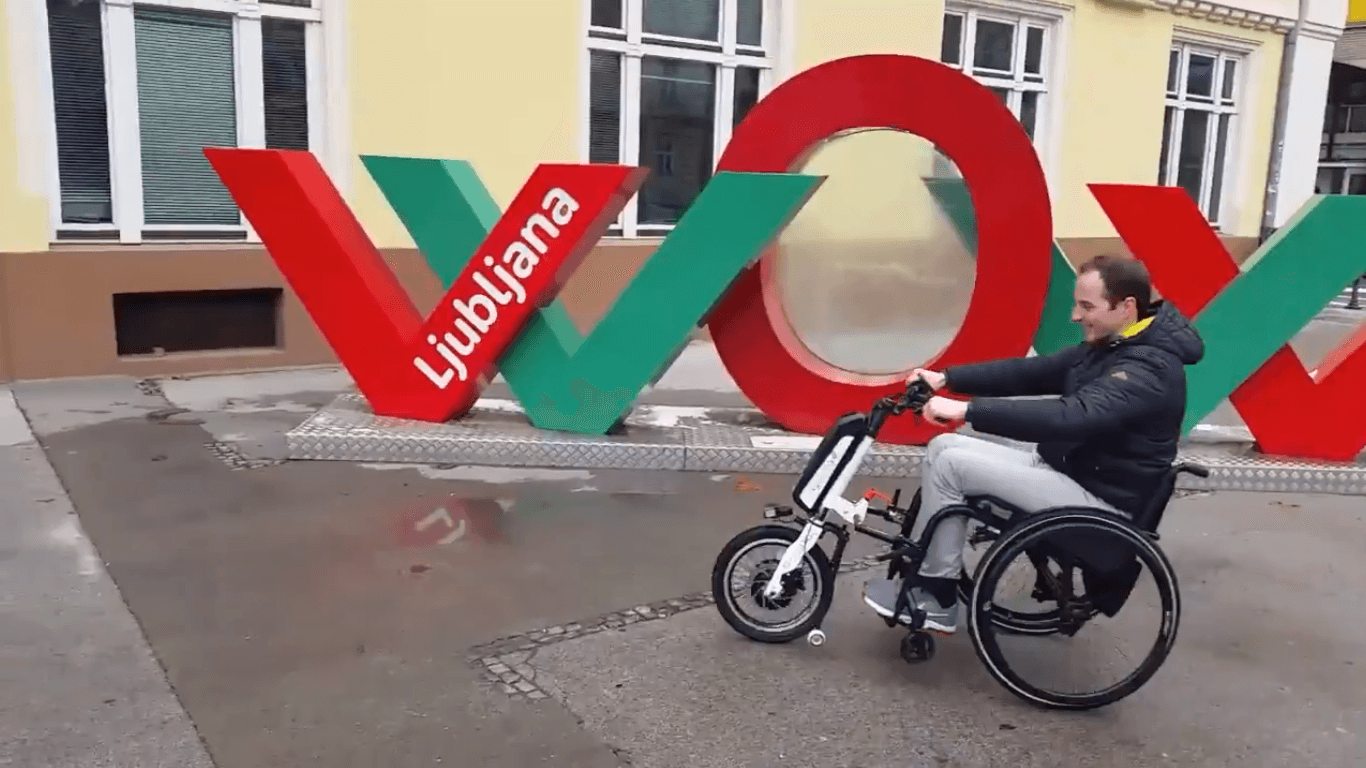
Screenshot from a Twitter video
If you’re driving into town and don’t know where to part, our guide to how to park in Ljubljana is here.
There aren't many places to eat after midnight, and most of them are by the train station, as reported here.
Want / need cigarettes but the stores have closed? Here's an incomplete list of bars downtown that will satisfy your craving for the demon weed. While if you’re having trouble with the ATMs then here’s a guide to the Slovene you’ll see on screen. If you get a hangover then find out where to get paracetamol (and prescription drugs) in Ljubljana here, while details on emergency birth control can be found here.
Ljubljana is a small and relatively safe city, but if need to contact the police then there’s a special number for foreigners, and that’s 113.
STA, 7 February 2019 - Slovenia's export growth slowed to 9.2% in 2018 from over 13% in the year before. With imports growing at 11%, the trade surplus narrowed to the lowest level on record, the Statistics Office said on Thursday.
Exports amounted to a new record EUR 30.9bn and imports to an equally record EUR 30.6bn, but the trade surplus narrowed to just EUR 0.2bn from more than EUR 0.7bn in the year before.
The entire surplus is generated in trade with non-EU countries, while the trade balance with EU members has been negative for many years.
Germany remains by far the biggest trading partner, accounting for a fifth of exports and about a sixth of imports. Italy is in second place by exports and imports.
The neighbouring Croatia is also a major trading partner and also one of the few EU sources of surplus, with exports at EUR 2.5bn and imports at EUR 1.7bn.
Austria, on the other hand, accounted for EUR 3.2bn of imports and EUR 2.4bn of exports.
Overall, just five countries - Germany, Italy, Croatia, Austria and France - account for more than half of all trade.
Slovenia's main exports were vehicles, medical and pharmaceutical products and electrical machinery.
Vehicles are also the biggest single import group, followed by oil derivatives and electrical machinery.
While the whole-year figures are positive, the trend shows come cause of concern amidst warnings that the economies of Slovenia's biggest trading partners are slowing down.
December exports thus rose by just 2% year-on-year, with exports up 6%.
The Chamber of Commerce and Industry (GZS), which has been raising the alarm about a looming slowdown for a while, described the figures as "predictably weak".
The chamber expects export growth rates to hover in the 3-4% range in the coming months.
"We estimate that exports of the automotive chain could even be negative year-on-year in some months given that January data for the sector were the worst in six years," the GZS's chief economist Bojan Ivanc said.
©SURS
More details can be found at SURS.


